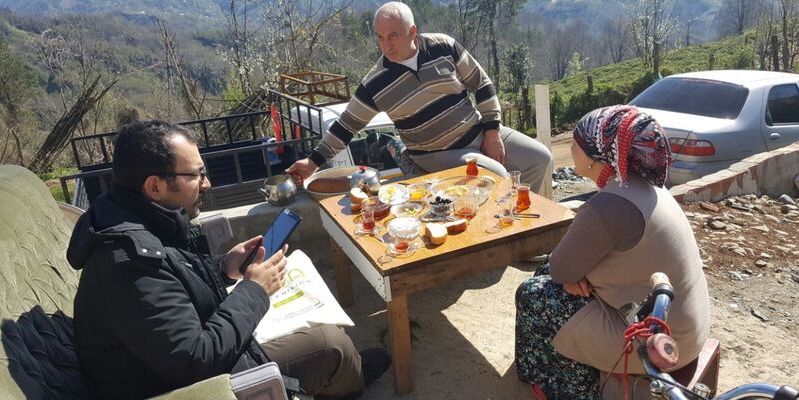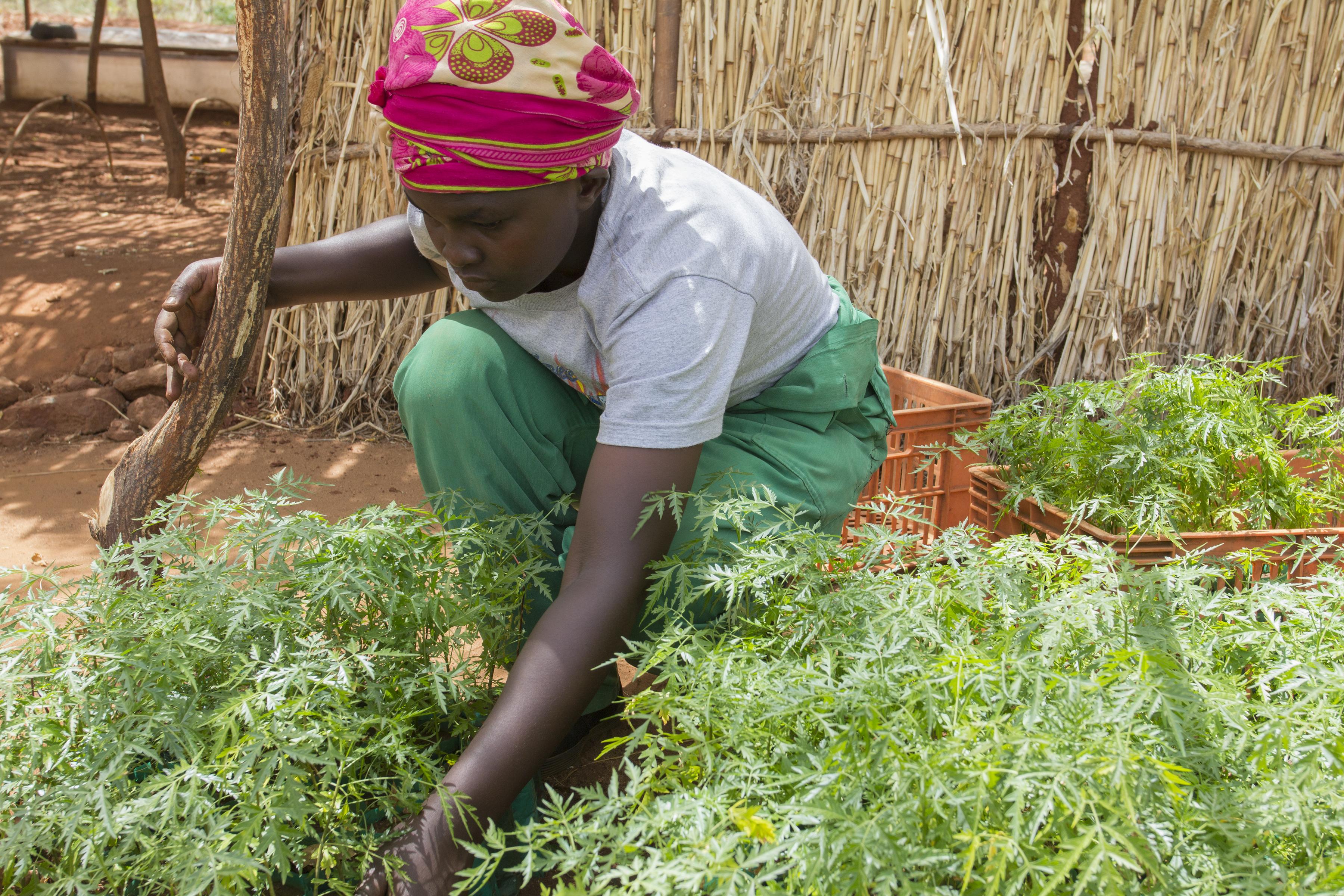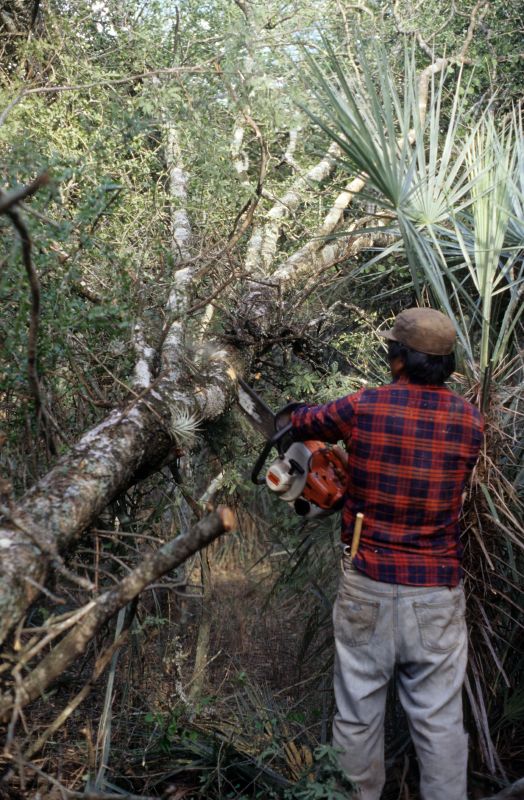Argentina

New tool to deliver swifter, better data on forests-poverty linkages
Q: What's better than having accurate, detailed and widely representative data?
A: Data that is accurate, detailed, widely representative - and frequent.
In fact, frequent data allows us to create not just a snapshot of our world, but to tease out complex patterns developing over time, and to make predictions into the future. This kind of information has never been more important for forests, which are at the heart of many sustainable development efforts, from the Paris Climate Agreement to the Sustainable Development Goals.
We know that forest resources are crucial to some 1.3 billion people worldwide, and that forests store over a billion tons of carbon. But we also know that climate change, demographics, migration, economic trends, and many other factors have significant impacts on forests and the people who, directly or indirectly, rely on them.
Consequently, building an in-depth understanding of how poor communities depend on forest resources is critical to developing policies and programs that simultaneously enhance those benefits and conserve habitats. To go about this, the World Bank’s multi-donor Program on Forests (PROFOR) previously partnered with a number of organizations to produce a “Forestry Sourcebook,” a survey tool aimed at collecting detailed level data about how people use forest resources.
The one challenge of the sourcebook approach, however, is that its implementation relies on the rollout of national-level household surveys – a necessarily complex and costly undertaking that occurs every three years as part of the Living Standards Measurement Survey (LSMS). So in order to complement the information gathered through the sourcebook's forestry module, PROFOR is also funding the development of a quicker, cheaper tool: the Forest Survey of Wellbeing via Instant and Frequent Tracking (Forest-SWIFT). It combines statistical methods with in-person interviews to provide robust measures of forest dependence and poverty, and uses tablets or smart phones so that data can then be rapidly collated and analyzed.
“Compared to the LSMS, Forest-SWIFT can be carried out in less time in the field and at a fraction of the cost, since the questionnaire can be done in less than 30 minutes,” explained Emilie Perge, a World Bank Economist leading the project. “The ultimate outcome of the Forest-SWIFT is to inform how forest projects are implemented, how to target beneficiaries, and how to monitor outcomes.”
So far, the Forest-SWIFT methodology has been piloted in Turkey, where Perge worked with Senior Environmental Economist Craig Meisner to model poverty and forest reliance. Some 7 million people – 40 percent of the rural population - live in Turkey's forest villages, and while they depend heavily on forests for income, they also suffer from below-average poverty rates.
“Forest villagers are declining in numbers due to large-scale urbanization in Turkey,” Meisner said. “We undertook a nationally representative survey of forest villages and found that forestry is a critical source of income for the poorest households, but is still a low-productivity activity. The results highlight the potential of forest cooperatives as a helpful tool for stemming migration, as well as the need to boost productivity and jobs in the forestry sector.”
Findings from the Turkey activity have been aggregated into a Forest Policy Note for Turkey's national forestry agency, and will be used to revise the country's new five-year forest strategy.
There are also plans to implement the Forest-SWIFT in Argentina, as part of an activity led by Senior Natural Resources Management Specialist Peter Jipp. The activity will focus on the Chaco Eco-region, where poverty and deforestation rates are among the highest in the country. With 1.5 million hectares of forested land being converted to agriculture between 2006 and 2011, communities are losing valuable ecosystem services and sources of income.
“Evidence from other countries suggests that the poor rely on forests for 25-35 percent of their income, but there are no such statistics for Argentina,” said Jipp. “This study will help fill that knowledge gap. Communities of indigenous and criollo origin will be a particular focus, as 70 percent of them live below the poverty line. The Forest-SWIFT will also support an impact evaluation of Argentina's Forest Fund, to assess how successful it was in preventing forest loss and land-use change.”
In addition, there is the possibility of applying the tool to forest and poverty data from Mozambique, and hopefully to other interested countries as well.
“There are so many cash and non-cash benefits that poor communities get from forests,” noted Werner Kornexl, Senior Environmental Specialist and PROFOR Manager. “This data can help us understand the real value of forests and improve policies to support poverty reduction efforts while also find new solutions for a more prosperous forest-based industry.”
For stories and updates on related activities, follow us on twitter and facebook , or subscribe to our mailing list for regular updates.
Last Updated : 06-16-2024

Share
Related Links
Understanding Forests Contribution to Poverty Reduction
Bringing Forest and Poverty into Focus in Argentina
Attachments
Keywords
Forest-SWIFT Methodology for High-Frequency Forest-Poverty data collection
CHALLENGE
Around 1.3 billion people – most of them living on less than $1.25 a day - rely on forests for some part of their livelihood. However, detailed, country-specific data is still lacking when it comes to forests’ socio-economic contributions and their role in poverty alleviation. Without this information, forests may be overlooked in national development strategies. This activity aims to contribute to knowledge on forest’s contribution to movements out of poverty by using a new and innovative approach to forest-poverty data collection.
APPROACH
A new tool, Forest-SWIFT (Survey of Wellbeing via Instant and Frequent Tracking) is being developed to collect information to document who the poor are, where they live and how they rely on forests. Forest-SWIFT combines the latest statistical methods with in-person interviews using smart phones or tablets, and also functions offline where mobile coverage or technology is limited. Survey data is collected on a central server, where it can be rapidly accessed, analyzed, and used to design more effective projects or policies.
The tool consists of 10-15 questions to strongly estimate forest reliance, a set of 10-15 questions to strongly estimate poverty, and a set of questions on governance. The tool methodology was developed by (i) modeling income (cash and non-cash) from forest to estimate forest reliance; (ii) modeling consumption/income models to estimate poverty; and (iii) identifying forest governance data. The tool is being field tested in Turkey, Argentina and Mozambique.
Forest-SWIFT can be used to complement the Living Standards Measurement Study (LSMS) Forestry Module. The LSMS Forestry Module is carried out every three years, and Forest-SWIFT can easily be carried out in the interim two years, to create a rich and comprehensive knowledge base on forests and poverty. Forest-SWIFT promises improved monitoring of forest projects, better targeting of beneficiaries of forest interventions, and more effective programs and policies that help to reduce poverty and enhance the economic, social and environmental benefits derived from forests.
RESULTS
This project has been completed. The main outcome of Forest-SWIFT was to equip policymakers with evidence emphasizing how forests are important for the poorest’ welfare and with a robust tool monitor the impacts of their forest interventions on beneficiaries’ welfare. The project emphasized the need for poverty reduction initiatives including more forest and its specificities.
Turkey
Using Forest-SWIFT data collected in 2017, this activity found that poverty in Turkey was 23.2%, which reflects the poverty decline observed in the rest of the country. On average, forest households had more forest income in 2017 than they did in 2016. Forest dependence - as the ratio of forest income on consumption – was found to be 51% for poor households and 32.6% for non-poor households.
Thanks to the model and collected data, Forest-SWIFT work in Turkey highlights the importance of forest resources for households’ livelihoods. Measures of forest income show that households are more dependent on these resources but returns from these activities are low; analysis of this measure of income couldidegu the General Directorate of Forest (GDF) of Turkey on how to increase returns from forest activities. In addition, Turkey has now a reference point on poverty within forests, which could help monitor how projects and interventions affect poverty in these areas.
Using lessons from Forest-SWIFT in Turkey, the activity is informing additional forest projects on how to collect forest income data and work with the poverty team to strongly measure poverty in their projects.
Armenia
In Armenia, Forest-SWIFT has been taken up by the Armenia Statistic Committee. This activity provided poverty rates not only for forest areas but also for the whole country. The data will inform the State Forest Committee on the importance of fuelwood to fulfil energy needs by poor and non-poor households in forest areas, rural and urban areas.
Tunisia
In Tunisia, although the existing data did not allow the use of the SWIFT methodology, the activity found that types of water source, assets, type of dwelling, occupation of household head are correlated to forest income. The data collected can be used to predict consumption and forest income in the future.
Forest-SWIFT continues to promote the need for more detailed data on forest livelihoods to understand poverty in forest areas and to have more robust measure of poverty in investment projects. The Brazil country team has expressed great interest to use Forest-SWIFT to analyse poverty in the Amazon ecoregion.
Thanks to Forest-SWIFT, teams can use a short set of questions to collect poverty and forest income determinants. These determinants are identified in a baseline model (one model for poverty and one model for forest dependence) using a linear regression but controlling for issues linked to over-fitting by using stepwise regressions. Once the determinants have been collected, the team can predict poverty and forest dependence using the betas from each baseline model and multiple imputation regression techniques. This activity consisted of testing a methodology to collect in a short and efficient manner data on poverty and forest dependence. This activity can be embedded in the monitoring and evaluation framework of IPF working on forests.
For stories and updates on related activities, follow us on twitter and facebook , or subscribe to our mailing list for regular updates.
Last Updated : 06-15-2024

Bringing Forest and Poverty into Focus in Argentina
CHALLENGE
The Chaco Eco-region in northern Argentina includes some of the country’s poorest communities, many of which are dependent on forests for their livelihoods. The Chaco Eco-region also suffers from the highest rates of deforestation in Argentina. Between 2006 and 2011, more than 1.5 million hectares of natural forest were destroyed, with conversion to agriculture and uncontrolled (often illegal) forest exploitation causing deforestation at a rate of 1.2 percent per year. Biodiversity has also been lost, soil and water resources have been degraded, and carbon emissions have increased.
APPROACH
This activity will describe and quantify how the rural poor in the Chaco Eco-region depend on forest-derived income for their livelihoods. Evidence from other countries and contexts shows that similar populations tend to earn 25-35% of their income from the forest. However, no such analysis has been completed in Argentina. This study will seek to answer such questions as: Do forests provide opportunities for poor households to build wealth and a pathway out of poverty? Does dependence on forest resources reflect limited options available to the poor, trapping them in a vicious cycle? How have forest policies impacted deforestation? This activity will also investigate linkages between forest dependence and land tenure, market accessibility, and social inclusion. The primary groups to be surveyed include small and medium-sized forest owners and communities, mainly of indigenous and criollo origin, 70 percent of whom live below the poverty line.
This analysis will fill a critical knowledge gap. The Living Standards Measurement Survey (LSMS) forest module will be used, and the Forest Poverty SWIFT tool will also be piloted to evaluate its utility and efficiency for data collection in the context of forests and poverty linkages.
In addition, this activity will evaluate the impact of the current Forest Fund Program in Argentina, adding new insight into the intervention’s effectiveness in preventing forest loss and land-use change, and providing direction for future improvement. Community-based maps will be produced to strengthen land management and land-tenure within indigenous and criollo communities, and support the monitoring of natural resources in adjacent forest areas.
Key outputs will include:
- A dataset on household characteristics, incomes, and natural resource dependence in the Chaco Eco-region;
- Knowledge products describing the results from the impact evaluation analysis, and from the geospatial and econometric analysis of forest dependence and poverty linkages;
- Community base-maps of land use, natural resources, and land tenure in at least two communities;
- Dissemination activities including a South-South learning and exchange event, a published report, workshops, and BBLs.
RESULTS
- Quantification of natural resource dependence and poverty linkages. An in-depth analysis of the forest dependence of local communities in the Chaco Eco-region, through a mixed methods approach using quantitative and qualitative data collected from the Forests and Community Project beneficiary communities.
- Impact evaluation of Forest Fund: An evaluation of the National Forest Fund impacts on deforestation was performed and presented to national authorities.
- Land use survey and drone mapping: Community-based maps of land use, natural resources, and land tenure developed.
- Findings disseminated: The preliminary econometric analysis exploring forest-poverty linkages in northern Argentina was published as part of Argentina’s Country Environmental Analysis. The results of these analytical products analyzing forest and poverty relationship were presented to staff of the Ministry of Environment and Natural Resources. Findings of the impact evaluation of the Forest Fund have been presented to the National Forest Director. Public dissemination has not been authorized, so far.
- Communications materials: 1 infographic; 3 animated videos, 4 documentary videos and 1 story map.
For stories and updates on related activities, follow us on twitter and facebook , or subscribe to our mailing list for regular updates.
Last Updated : 06-15-2024








